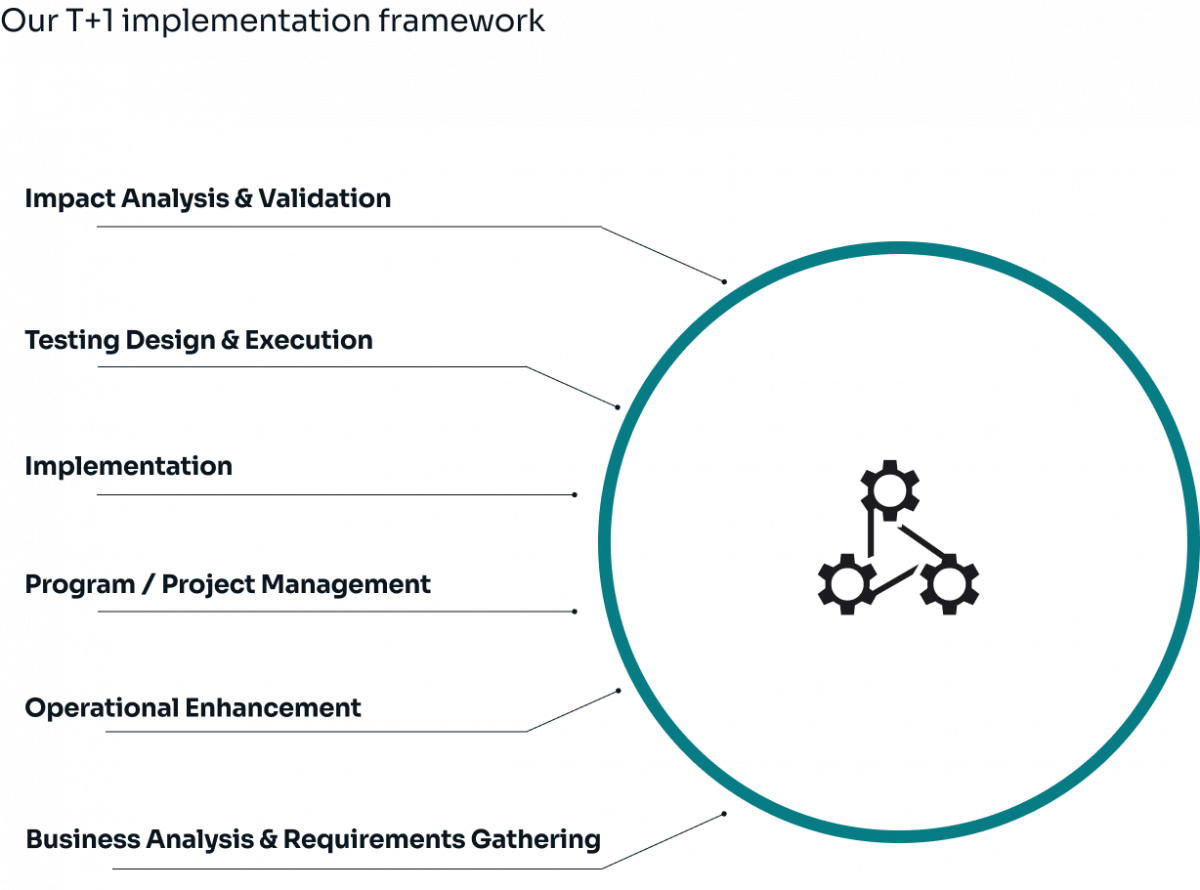SEC Division of Examinations Releases 2026…

As T+1 reshapes global markets, Sia explores its impacts and offers a robust framework to help UK & EU firms prepare for the shift.

In May 2024, North American markets officially transitioned from a T+2 to a T+1 securities settlement cycle. The change, reducing the time between trade execution and settlement to a single business day, has already delivered tangible benefits: increased affirmation rates, reduced margin requirements, and consistent settlement fail rates. As global markets take note, the UK and Europe are now accelerating their own plans for T+1 implementation, likely by the end of 2027.
Sia has identified four core dimensions affected by the T+1 transition:
Sia has been proactively anticipating the shift to T+1 trade settlement and we can provide a framework for T+1 using extensive experience from the US.

Sia has a rich experience with T+1 settlement transactions, below is an example of the deliverables and services from some of our past experiences:
Initiation and Planning, Execution & Monitoring / Controlling, Reporting and program / Project closure
Program Management Office Lead, Program Management Office, Testing & JIRA Support
Managing Director | Paris
Marc is a 15-year plus experienced Managing Director in the Compliance practice. He joined Sia as a consultant, focusing on regulatory projects (both in Financial Services and Industry sectors), as well as ESG, and more recently on compliance with the AI Act.

Associate Partner, Financial Services & Compliance | London
Fabien is an Associate Partner in the Banking practice in London.
